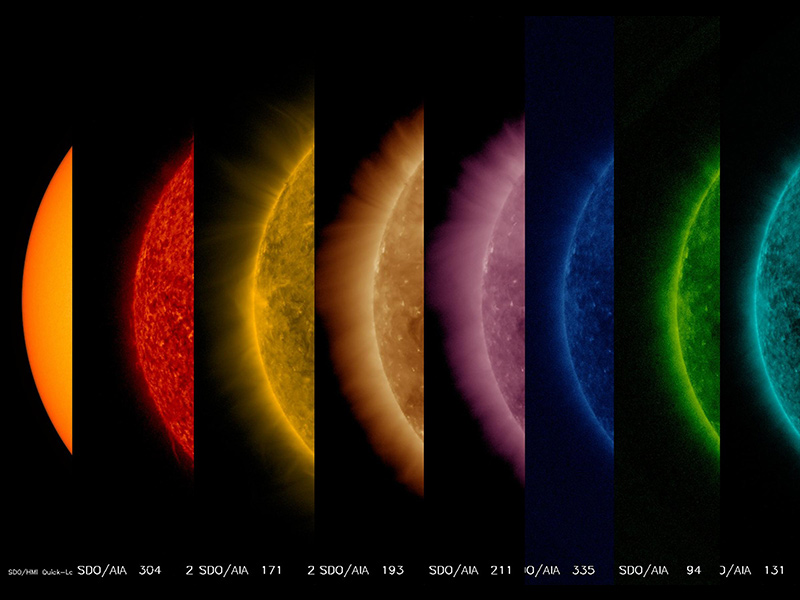
Quick Take
The Sun—the heart of our solar system—is a yellow dwarf star, a hot ball of glowing gases.
Its gravity holds the solar system together, keeping everything from the biggest planets to the smallest particles of debris in its orbit. Electric currents in the Sun generate a magnetic field that is carried out through the solar system by the solar wind—a stream of electrically charged gas blowing outward from the Sun in all directions.
The connection and interactions between the Sun and Earth drive the seasons, ocean currents, weather, climate, radiation belts and aurorae. Though it is special to us, there are billions of stars like our Sun scattered across the Milky Way galaxy.
Go farther. Explore the Sun In Depth ›
10 Need-to-Know Things About the Sun
BIGGEST
If the Sun were as tall as a typical front door, Earth would be about the size of a nickel.
MOST MASSIVE
The Sun is the center of our solar system and makes up 99.8 percent of the mass of the entire solar system.
DIFFERENT SPINS
At the equator, the Sun spins once about every 25 days, but at its poles the Sun rotates once on its axis every 35 Earth days.
SUN SHINES IN HIGH-ENERGY X-RAYS
CAN’T STAND ON IT
As a star, the Sun is a ball of gas (92.1 percent hydrogen and 7.8 percent helium) held together by its own gravity.
RINGLESS
The Sun does not have any rings.
UNDER STUDY
Many spacecraft constantly observe the Sun, helping us keep an eye on space weather that can affect satellites and astronauts.
ENERGY FOR LIFE
Without the Sun's intense energy, there would be no life on Earth.
NUCLEAR FUSION
The Sun's core is about 27 million degrees Fahrenheit (15 million degrees Celsius).
MOONLESS
But orbited by eight planets, at least five dwarf planets, tens of thousands of asteroids, and up to three trillion comets and icy bodies.
WHAT WE SEE
The Sun’s visible surface sometimes has dark sunspots, which are areas of intense magnetic activity that can lead to solar explosions.
TWO LONG FILAMENTS
Pop Culture
The Sun has inspired mythological stories in cultures around the world, including those of the ancient Egyptians, the Aztecs of Mexico, Native American tribes of North and South America, the Chinese, and many others.
In more recent times, the Sun adorns everything from album covers, such as Sublime's iconic 1992 debut, to packages of raisins, while it influences stories in comics, theatrical films and everything in between.
If you're Superman (or a fellow Kryptonian), your powers are heightened by the yellow glow of our Sun, and you can even dispose of dangerous materials like Superboy once did, by hurling them into the Sun. And in the 2007 film Sunshine, the Sun is dying, leaving Earth in a state of deep freeze. To save humanity, a crewed spacecraft is on its way to reignite the Sun with a bomb, though things don't go quite as planned.





Comments
Post a Comment